What is baking chocolate?
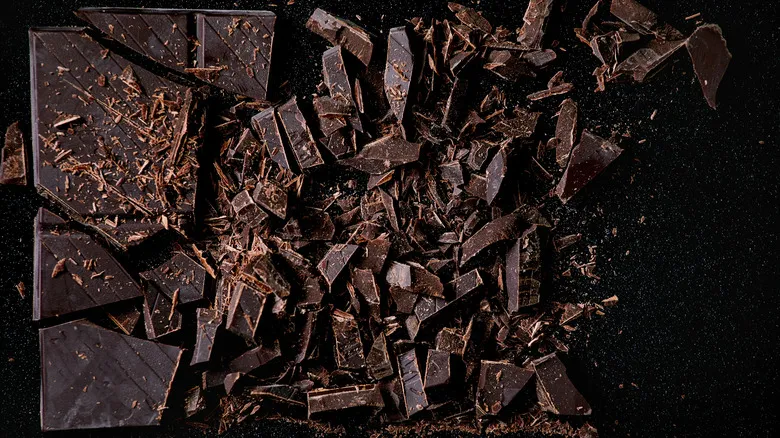
In simple terms, baking chocolate is a type of chocolate specifically designed for use in baking. Like other chocolates, it consists of cocoa butter and cocoa powder, but the proportions are what set it apart.
For example, baking chocolate contains a higher amount of cocoa butter compared to standard chocolate bars or chips, which enhances its melting properties and allows it to blend seamlessly into batters. Additionally, it typically has less sugar, or sometimes none at all, which is crucial for preventing baked goods from becoming overly sweet. This reduced sugar content also minimizes the risk of burning when exposed to the high temperatures of the oven.
Moreover, baking chocolate often omits certain ingredients entirely. It usually avoids flavor enhancers like vanilla or almond extract to maintain the authentic taste of cocoa. It also excludes stabilizers and preservatives commonly found in chocolate chips, which helps the chips retain their shape. A quality baking chocolate should only include standard chocolate components such as sugar, cocoa, and cocoa solids. If soy lecithin is listed, it serves as an emulsifier that chocolatiers use to improve melting quality.
How is it made?
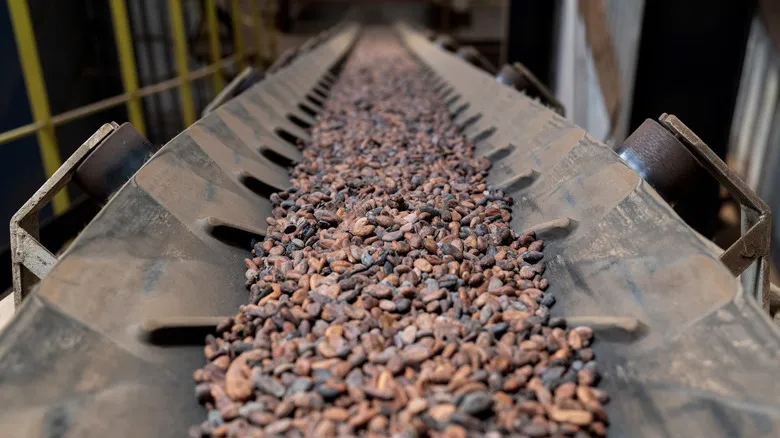
The creation of a baking chocolate bar starts with the cacao bean. After undergoing fermentation, drying, roasting, and grinding, the cocoa bean is processed through a method called conching, which mashes and heats it into a paste known as chocolate liquor. This mixture is a smooth combination of cocoa powder and cocoa butter and is solid at room temperature, essentially forming a bar of unsweetened chocolate.
At this stage, additional ingredients can be mixed in, such as extra cocoa butter (the natural fat found in cocoa beans) and sugar (the sweetener that balances the bitterness of chocolate). This is typically where baking chocolate diverges from other chocolate types. For example, milk chocolate includes milk solids or powder, resulting in an incredibly creamy taste and texture. Commercial chocolate bars often have added sugar and may include vanilla or artificial vanillin to enhance the flavor.
In contrast, baking chocolate remains relatively unadulterated. It is either sold in its unsweetened form or has minimal amounts of sugar and cocoa butter added to produce variations like bittersweet, semi-sweet, and dark chocolate.
Baking chocolate vs candy chocolate bars
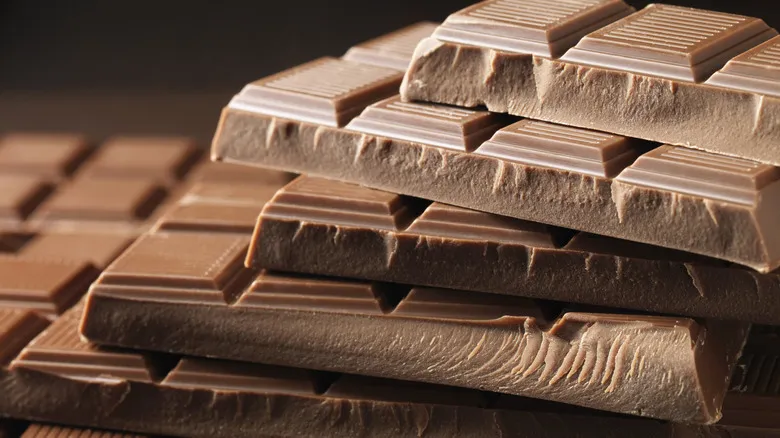
Baking chocolate typically consists of the same basic ingredients as regular chocolate bars, but the key difference lies in the proportions of those ingredients. Candy chocolate bars usually have a higher sugar content and additional flavorings, which means they should be treated as candy rather than a baking ingredient. They function more as mix-ins rather than components that can be melted and seamlessly blended into batters and doughs. Let’s explore some specific candy bars and how they contrast with baking chocolate.
First up is milk chocolate. As the most widely enjoyed type of chocolate, it is often savored on its own due to its harmonious combination of sugar, milk, and cocoa, making it deliciously enjoyable by itself. However, these same ingredients can behave unpredictably in a hot oven. The increased sugar content can lead to burning, while the milk solids are susceptible to developing an overly toasted flavor.
White chocolate candy bars are particularly distinct, as they contain no cocoa powder and are made solely from a mixture of cocoa butter, milk, vanilla, and sugar. In fact, some argue that white chocolate isn’t true chocolate at all. With its high levels of cocoa butter and milk solids, white chocolate is especially prone to seizing and burning when heated, making it quite challenging to work with in baking.
Baking chocolate vs chocolate chips
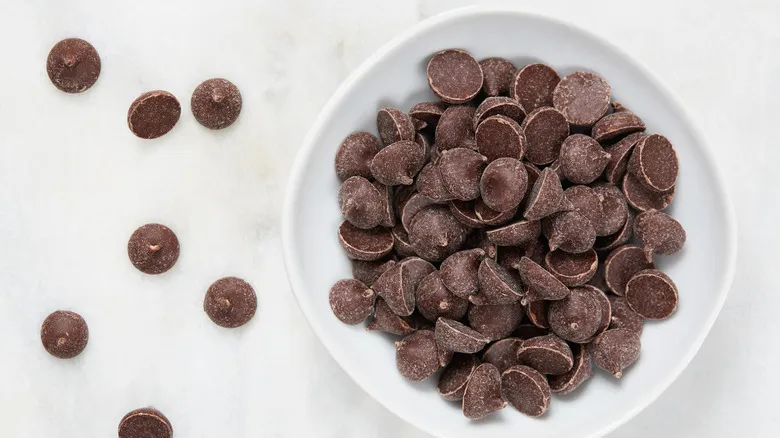
Chocolate chips are the primary ingredient in America's beloved cookie, but they may not be suitable for all baking endeavors. A significant issue with chocolate chips is that they contain chemical stabilizers, such as soy lecithin, which help them maintain their shape even in a hot oven. While this is beneficial for cookies and brownies, it makes it challenging to achieve a smooth melted chocolate consistency that can be mixed into batters and dough. This can also result in a chunky ganache or chocolate frosting.
On the other hand, baking chocolate can be seamlessly incorporated into chocolate chip cookies. When chopped and mixed into the cookie dough, the only difference is that the chocolate will melt into delightful puddles on top of the cookie. Once cooled, it will harden again and behave almost like a chocolate chip. For this reason, I believe baking chocolate is the more versatile and practical ingredient.
Baking chocolate vs cocoa powder
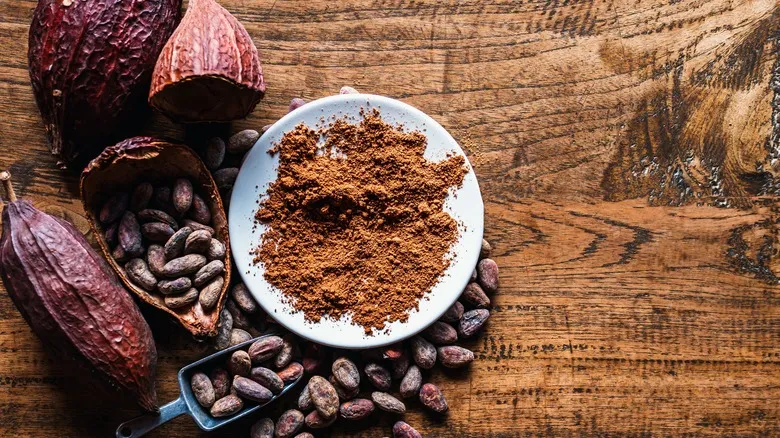
In contrast to the other ingredients mentioned earlier, cocoa powder is unique in that it contains no cocoa butter, sugar, or anything besides finely ground cacao solids. Bakers often "bloom" their cocoa powder by mixing it with hot water, coffee, or melted butter before adding it to their batter. This process helps to unlock some of the hidden flavor compounds in the cocoa. When combined with melted butter or oil, the cocoa powder and fat mixture can function similarly to baking chocolate, as the added fat creates a smoother, richer product that is ideal for incorporating into doughs and batters.
However, it's important to note that all baking chocolates are made with cocoa butter as their fat source, so a mixture of cocoa powder and butter or oil will yield a different flavor and texture. For example, cocoa butter has a lower melting point than butter and is composed of 100% fat, while butter contains 80% to 82% fat. Consequently, brownies made with baking chocolate may turn out to be richer than those made with cocoa powder and butter. Additionally, butter has a creamy flavor, whereas cocoa butter is flavorless. Cocoa butter is solid at room temperature, while oil remains liquid, which also affects the baking outcome. If you're looking for a substitute for cocoa butter, vegetable shortening is the closest match, as it is 100% fat, solid at room temperature, and virtually flavorless.
Using baking chocolate in your baked goods
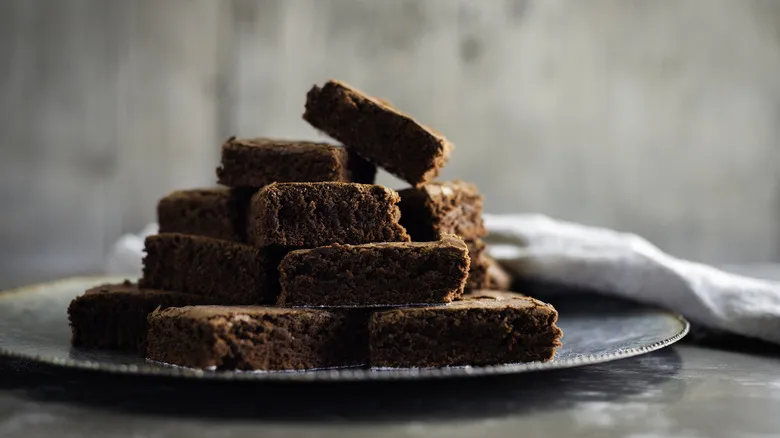
While baking chocolate is specifically designed to simplify your tasks as a baker, there are some essential guidelines to follow in order to fully utilize its distinct properties. The first step is to ensure that you melt your baking chocolate correctly. The low melting point of cocoa butter, which allows chocolate to melt in our mouths, also means it can easily burn on a hot stove or in the microwave.
To prevent this, bakers should melt chocolate using one of two methods. First, if the chocolate isn't already in small pieces or wafers, chop it into smaller chunks to promote even melting. Second, bakers can microwave the chocolate in short 30-second bursts, stirring in between, or melt it on the stovetop using a double boiler, stirring occasionally. The gentle, indirect heat from the double boiler helps prevent scorching.
During the melting process, it's crucial to keep any water or moisture away from the chocolate, as this can cause it to seize. While there is a simple fix for seized chocolate, it's best to avoid the issue altogether. Once melted and smooth, your baking chocolate can be easily incorporated into your batters and doughs.
Using baking chocolate in your ganache/chocolate icings
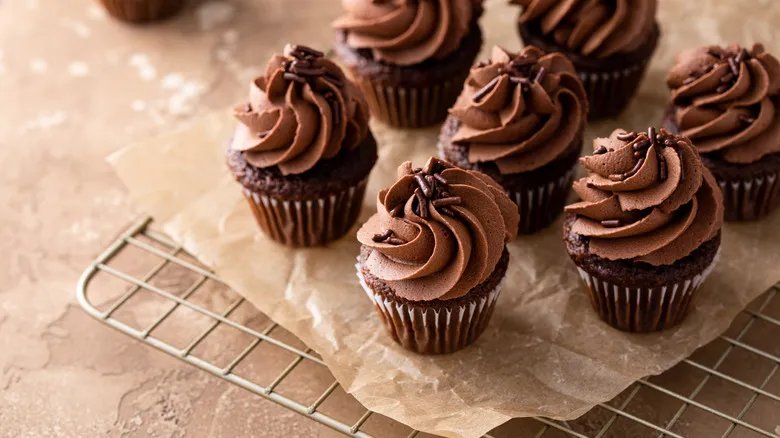
Baking with chocolate may seem daunting, but transforming it into a luscious, creamy frosting is quite achievable. Many straightforward chocolate buttercream recipes utilize cocoa powder for a subtle chocolate taste. However, for a richer and fudgier frosting, using baking chocolate is the way to go.
Most frostings and icings are built on a foundation of powdered sugar, and unsweetened baking chocolate is often chosen to prevent the recipe from becoming overly sweet. By gently melting the chocolate using a microwave for 30 seconds or a double boiler, you can incorporate the slightly cooled chocolate into a basic buttercream recipe, enhancing the chocolate flavor. While sweetened baking chocolate can also be used, I recommend opting for a bittersweet variety to avoid an overly sweet frosting.
Then there's ganache, a decadent topping made from chocolate and heavy cream that boasts a thick, velvety texture reminiscent of truffles. Sweetened baking chocolate is typically used for ganache, complemented only by heavy cream. There are various methods to prepare ganache, but to prevent the chocolate from burning, most bakers heat the heavy cream until it steams before pouring it over the chopped chocolate. The residual heat from the cream will melt the chocolate without the risk of scorching. This ganache can be used to repair a cracked cheesecake or to fill a pie crust.
When NOT to use baking chocolate

While baking chocolate is a highly adaptable ingredient, there are occasions when it may not be suitable for your recipes. If you're aiming for the traditional appearance and texture of chocolate chips, it's best to stick with the original chocolate chips instead of using baking chocolate. You might also want to use chips for other baking endeavors, such as seven-layer magic bars or blondies, so it’s a good idea to keep them on hand.
Another situation where baking chocolate isn't ideal is when you're looking to dip or coat your baked treats. For instance, if you want to cover strawberries in chocolate, baking chocolate isn't necessary. In fact, the stabilizers found in chocolate chips make them particularly effective for dipping, as they adhere well to the surfaces of fruits, cookies, and more. Likewise, if you're planning to dip large quantities of cake pops or similar treats, candy melts might be a better choice. They can mimic the taste of chocolate but are more heat-resistant due to their waxy coating.
Different types of baking chocolate

The most traditional form of baking chocolate is the unsweetened variety, commonly produced by brands such as Baker's, Guittard, and Ghirardelli. These chocolates are typically available in 4- or 8-ounce packages, either as bars or squares, making them ideal for chopping and melting.
For those seeking a baking chocolate with a touch of sweetness, bittersweet and semisweet options are also available. Bittersweet chocolate leans towards dark chocolate in flavor, providing a richer cocoa taste, while semisweet chocolate contains more sugar, resulting in a sweeter flavor profile for your baked goods. These types of baking chocolate can be found in various forms, including bars, wafers, chunks, and fèves, which are flat, wide disks.
Bakers should take note: some brands have begun labeling their assorted chocolate chips, milk chocolate, and white chocolate as "baking" chocolate. It's important to be cautious about considering these options as genuine baking chocolates. To ensure suitability for your recipe, always check the ingredient list for any unusual components.
Where to find baking chocolate
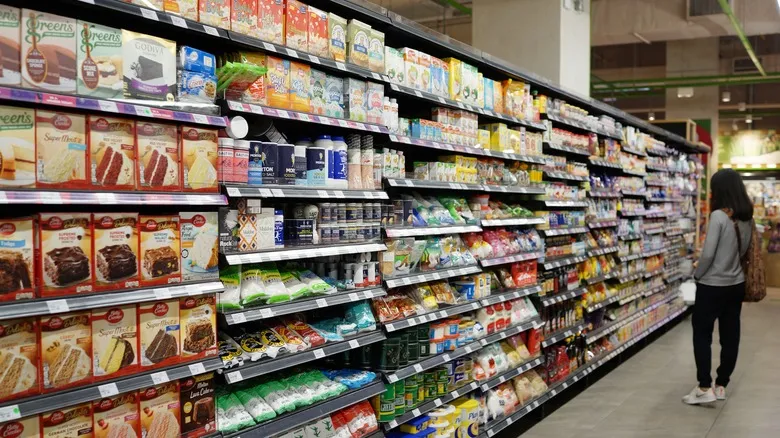
Baking chocolate can be found in the most obvious location: the baking aisle of your local grocery store. The most popular brands include Baker's, Ghirardelli, and Guittard, all of which offer a range of unsweetened and sweetened varieties. If you're interested in trying imported baking chocolate, you can explore various options online.
Valrhona, a renowned French brand, provides some of the finest quality baking chocolate in their signature fève shape, though it typically comes at a higher price than standard grocery store brands. King Arthur Baking Company also carries some Valrhona chocolate under its own label. Additionally, Taza and Callebaut offer a variety of choices, with Taza providing large bags and Callebaut offering hefty one-pound chocolate blocks. A friendly tip for ordering chocolate online: be sure to choose expedited shipping during warmer months to avoid receiving a melted surprise.
How to properly store baking chocolate

The primary threats to chocolate storage are heat and moisture. Heat can cause chocolate to melt, while moisture can lead to "bloom," resulting in unsightly light spots on the surface. While these factors may not impact the chocolate's flavor, they do affect its appearance. Storing chocolate in the refrigerator can help mitigate melting, but it won't solve the blooming issue.
Most refrigerators, unless they are equipped with humidity control, maintain a basic level of moisture, which can cause chocolate to bloom. Additionally, chocolate is highly susceptible to absorbing other odors and flavors, so if it isn't wrapped securely, it can take on the various scents present in your fridge.
The ideal way to store baking chocolate is to keep it tightly wrapped in a cool, dry location, away from strong-smelling items like onions or curry powder. Once opened, it's best to use it as soon as possible, as chocolate tends to spoil more quickly after being unwrapped. Consider your baking chocolate similar to perishable items like milk or eggs, which have a limited shelf life. When uncertain, it's wise to wait until you need the ingredient and then purchase only the amount required.
Substitutions for baking chocolate
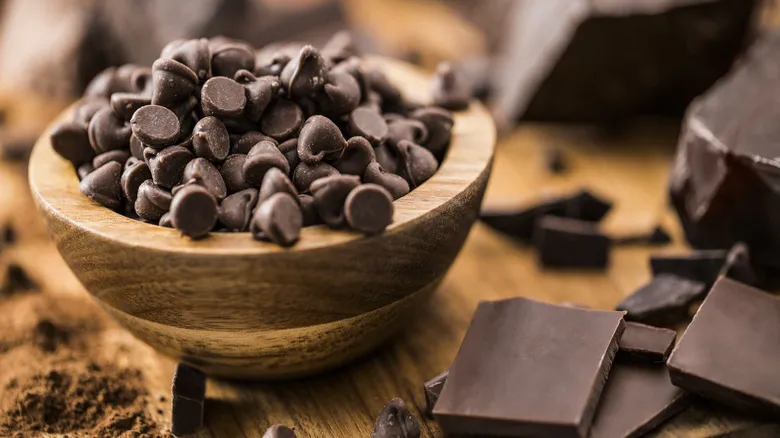
Do you still want to whip up a delightful treat but find yourself lacking the ideal baking chocolate? No need to fret; there's a suitable alternative ready for you. As previously mentioned, combining cocoa powder with vegetable oil or butter can effectively replicate baking chocolate in its simplest form. If your recipe requires unsweetened baking chocolate, just mix one part butter with three parts cocoa powder. While butter will impart a different flavor due to its milk fat content, it should still work well—just keep in mind that it contains a bit more moisture than oil would.
If your recipe calls for bittersweet or semisweet baking chocolate, you can easily substitute with regular chocolate bars. The final product may not have the same luxurious texture or flavor, but it will still be a delicious baked treat. As a last resort, you can use chocolate chips, although this option may yield the least satisfying results due to the added sugar and chemical stabilizers.
In summary, consider giving baking chocolate a shot. It might just transform your perspective on chocolate chips or bars!
Recommended
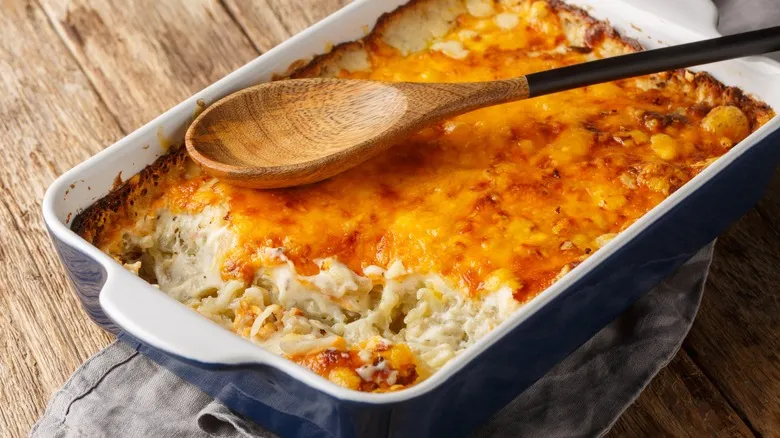
The Reheating Mistake That Can Shatter Your Casserole Dishes
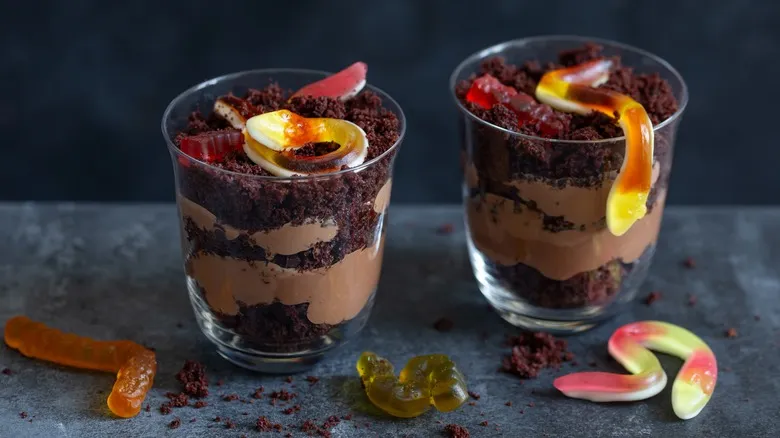
The Simplest Way To Elevate No-Bake Dirt Cakes

The Oven Rack Mistake Bakers Should Avoid According To Mary Berry

Mary Berry's Butter Tip To Bake Superior Cakes
Next up

